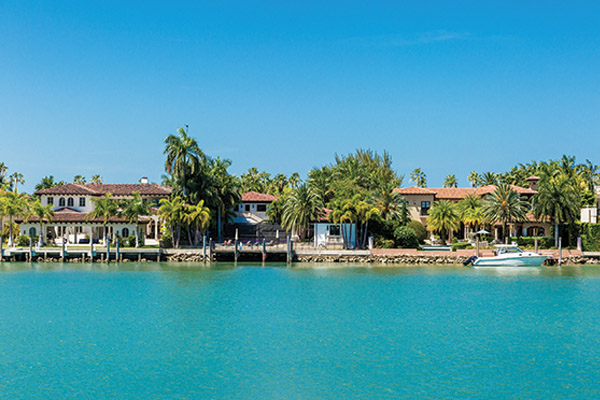Regular readers of this column may remember a story from a little over a year ago about Crystal Lagoons, a Santiago, Chile-based company which builds huge water features on what are otherwise landlocked properties.
The company recently opened its first project in the States, an 8-acre lagoon at the Epperson development in Florida’s Pasco County. A second lagoon, this one of 14 acres, is ready to go in St. Augustine, Florida, and a third is under construction in the Houston area.
But that’s not all. Crystal Lagoons, which has its US headquarters in Miami, has some 60 projects either under contract or in the negotiation stage here in the US. One of those is a deal with Wynn Hotels to turn a 38-acre golf course behind its two properties on the Las Vegas strip into a lagoon where guests can not only swim and sun on white, sandy beaches, but also water-ski, paddleboard and paraglide.
What makes Crystal Lagoons so special is that they are far less expensive to build than a golf course, and use far less water. Plus, they offer residents far more activity options than even an Olympic-size swimming pool.
So far, the company has been dealing mostly with private developers of master-planned communities: places where only residents have access to the lagoons. But it is thinking much broader than that, said Executive Vice President Kevin Morgan in an interview from his Dallas office.
“Real estate certainly is a growth sector for us, and we’re just scratching the surface there,” Morgan said. “But there’s also a high level of interest from outside private real estate development to make Crystal Lagoons more accessible to the public at large.”
Here’s where the company is heading in the future:
Open access: Crystal Lagoons is working with developers whose projects aren’t large enough to support the cost of building and maintaining even a small lagoon. In these cases, the lagoons would be open to the public for a fee.
Conversions: In an effort to bring traffic back to shopping malls, the company would take an anchor space abandoned by a large retailer such as Sears or J.C. Penney and re-purpose it as a combination lagoon and fitness center or food operation. Morgan calls the result “a synergistic co-amenity,” and says there is a lot of interest from mall owners.
Municipalities: Local governments would use public land to build public-access lagoons on ground that may have little use otherwise. Morgan thinks that the feature would generate enough income to recoup the initial cost “very quickly.” The lagoon would operate as a jurisdiction-owned business, but it also would help give value to the land around it and support further development.
Colleges: As universities compete for students and student-athletes, a lagoon would become part of a school’s amenity package, for both recreation and water sports. Morgan reports that his company is “beginning to see a lot of traction” in this area.
Repurpose: Golf courses are expensive to build and maintain, and many are not seeing enough use to remain profitable. Crystal Lagoons is in discussion with several operators to scale back 18-hole courses to nine holes and build 8- to 10-acre lagoons on the former front or back nine.
What is it about Crystal Lagoons that is generating this much interest?
For one thing, the typical 5- to 10-acre lagoon is relatively inexpensive to build and maintain. They cost roughly $650,000 an acre to build, versus $1 million a hole for a typical golf course – and up to $1.7 million per hole for a high-end course. Morgan wouldn’t reveal what it costs to monitor water quality from the NASA-like control room in Miami, saying only that it is minimal.
For another, the lagoon-bottom liners can withstand the sun’s ultraviolet rays without deteriorating. And they can last for up to 100 years, according to the company.
Any kind of water can be used to fill a lagoon, even saltwater and brackish water. In Cabo San Lucas, Mexico, a 27-million-gallon lagoon was filled with seawater diverted from the Pacific Ocean. By the time it reached the lagoon, it was clean and clear.
The lagoons use less water, too – 10 times less then a golf course, and half the water of a park of the same size. Using a patented pulsating mechanism and electronic sensors embedded in the liner, the water is kept pristine at all times. Controlled pulses use only a small quantity of chemicals, as compared to the high level of chlorine and other disinfectants used for conventional swimming pools.
But perhaps most important of all, at least to builders and developers, the lagoons lead to faster sales at higher prices.
According to an independent, third-party study at the 2,000-house Epperson property near Tampa, sales are running at twice the pace experienced by its competitors. Also, prices of the houses are up 20 to 22 percent, compared to just 4 to 5 percent for the same models at another Tampa-area location.
Is it any wonder, then, why real estate consultant John Burns reports that Crystal Lagoons has become the top amenity among the 50 best-selling master planned communities?
Lew Sichelman has been covering real estate for more than 30 years. He is a regular contributor to numerous shelter magazines and housing and housing-finance industry publications. Readers can contact him at lsichelman@aol.com.

